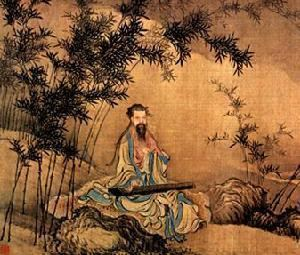The tumultuous era following the Eastern Han Dynasty is one that birthed the famed Three Kingdoms, which soon fractured, leaving the land ripe for invasions by the Tuoba people, descendants of the Tungusic tribes. This led to the beginning of the Six Dynasties period, an era marked by political chaos, philosophical debates, and shifting power structures in ancient China.
In the north, the Tuoba people, under the banner of the Northern Wei, dominated, while the south saw a series of short-lived Han Chinese dynasties, most of which were ruled by military generals rather than true monarchs. These states were characterized by constant warfare and instability, with rulers often rising to power only to lose their kingdoms to rivals or internal strife shortly after. Amidst this, some emperors harbored grand ambitions of expelling the “barbarians” from the north and reuniting the country, but their efforts often only resulted in brief periods of peace in the southern territories.
Philosophical Flourishing Amidst Chaos
Despite—or perhaps because of—the political unrest, the 3rd century saw a flourishing of intellectual activity. Scholars sought to reassess their views on life, and the advantages and disadvantages of Confucianism and Daoism became hot topics of debate. This period saw the emergence of “qingtan” (pure conversation), a style of abstract discussion among intellectuals and writers who gathered to exchange their views on life, philosophy, and the cosmos.
Two key figures stand out from this intellectual revival: Ji Kang, a great musician and philosopher (223-262), and his close friend, the poet Ruan Ji (210-263). Their friendship became a symbol of male camaraderie, a theme that would resonate through Chinese literary history. Their bond became the archetype for later poets and artists, such as Li Bai and Meng Haoran during the Tang Dynasty, and Bai Juyi and Yuan Zhen in the Tang and Song periods.

However, the nature of their relationship remains a subject of debate. While some may speculate about a romantic aspect, the historical records do not support this notion. Both Ji Kang and Ruan Ji were married, and there is no concrete evidence to suggest that their relationship was anything other than one of deep friendship. In ancient China, male friendships were often described in affectionate and even intimate terms, which were culturally acceptable expressions of brotherhood and respect, but not necessarily indicative of any romantic or sexual involvement.
The Famous Story of Ji Kang, Ruan Ji, and Their Friend Shan Tao
An interesting anecdote involving Ji Kang, Ruan Ji, and their friend Shan Tao is found in the historical work Shishuo Xinyu by Liu Yiqing. The story reveals how Shan Tao’s wife became suspicious of the closeness between the two friends. She even attempted to spy on them, a story that has fueled debates about the true nature of their bond. It’s worth noting that, historically, the relationship between these men was seen more as an example of a perfect friendship than a romantic entanglement.
The Decline of Confucianism and the Rise of Daoism
While the intellectual elite engaged in philosophical discourse, the political landscape continued to spiral into turmoil. The Six Dynasties period was rife with political intrigue, palace coups, and assassinations, especially during the reign of the Liu family in the early Song Dynasty. One of the most infamous figures from this era was Emperor Liu Ziye, whose debauchery and tyrannical rule ended with his assassination at the hands of his own family members. His life is often compared to that of the Roman Emperor Elagabalus, who was also known for his eccentric and decadent lifestyle.
At the same time, Daoism experienced a resurgence under figures like Ge Hong, a philosopher and alchemist who contributed significantly to the development of Chinese scientific thought. Ge Hong’s Baopuzi became a key text in Daoist philosophy, discussing topics from alchemy to social customs. His writings reflect the increasing interest in health, longevity, and the metaphysical aspects of life that were common themes in Daoist thought.
Cultural Influence and Modern Connections
The Six Dynasties period may seem distant, but its influence on Chinese culture remains profound. The era witnessed the intersection of philosophy, politics, and personal relationships, creating a fertile ground for the development of ideas that still resonate today. The emphasis on friendship, the exploration of Daoism and Confucianism, and the intellectual curiosity sparked by political instability all contributed to shaping the values of subsequent dynasties, particularly in literature and philosophy.
Today, the philosophical debates and literary works of the Six Dynasties period continue to be studied by scholars and enthusiasts alike. Whether it’s the nature of male friendship in classical literature or the rise of Daoism as a counterpoint to Confucian values, these themes offer valuable insights into human nature and society that are still relevant in the modern world.
Word Count: 745

No comments yet.